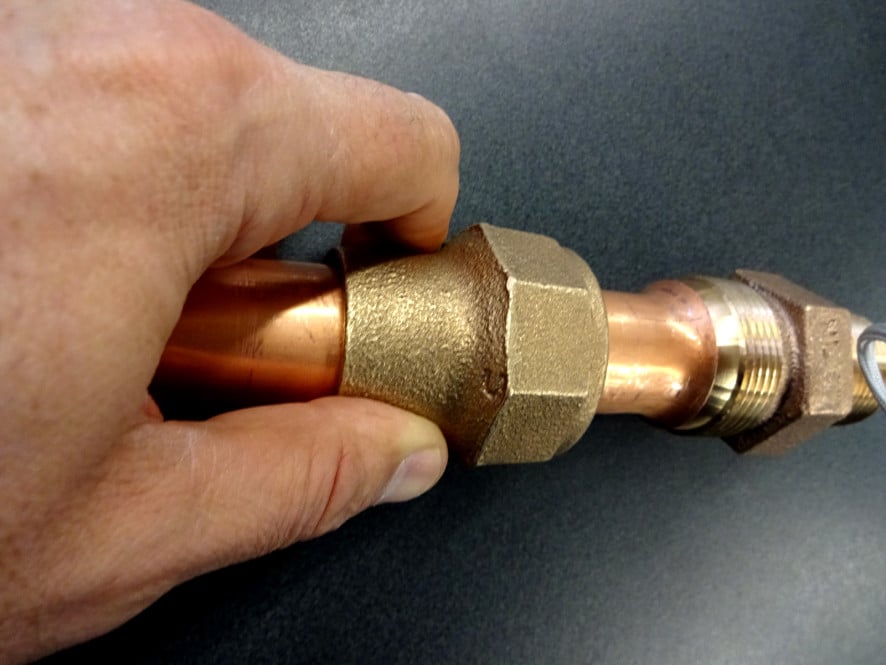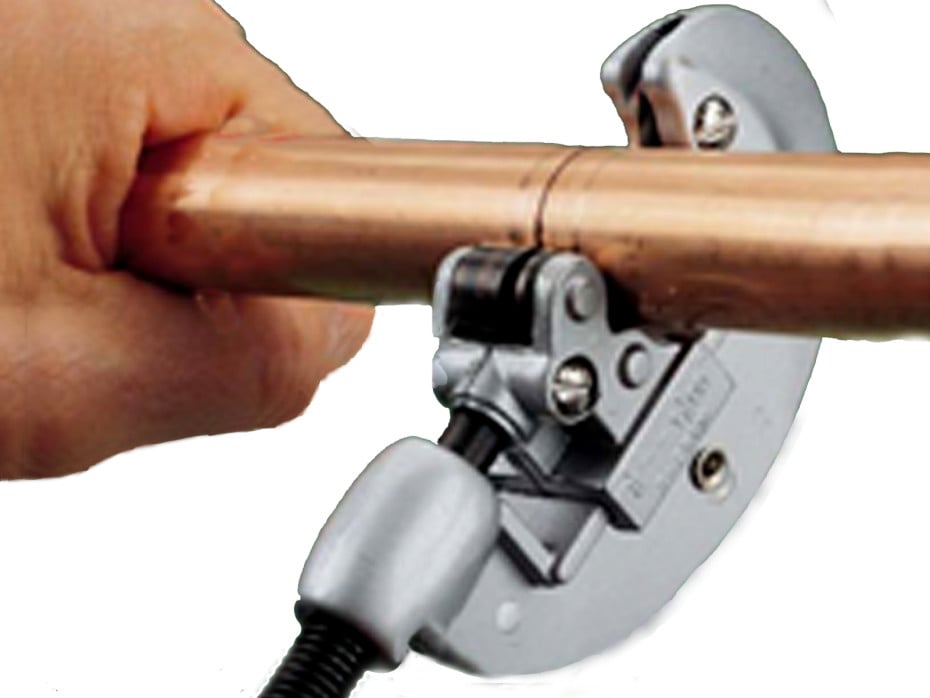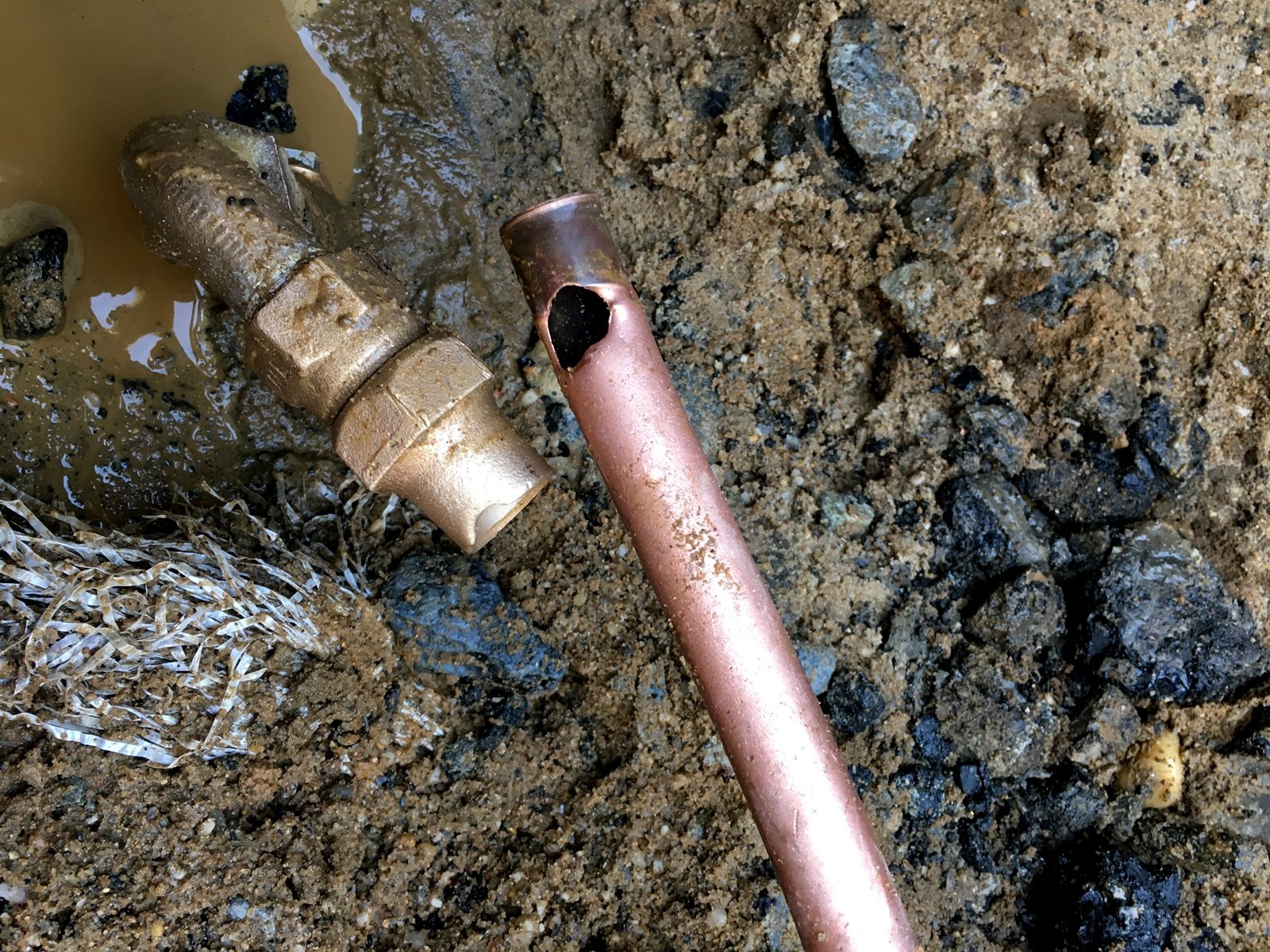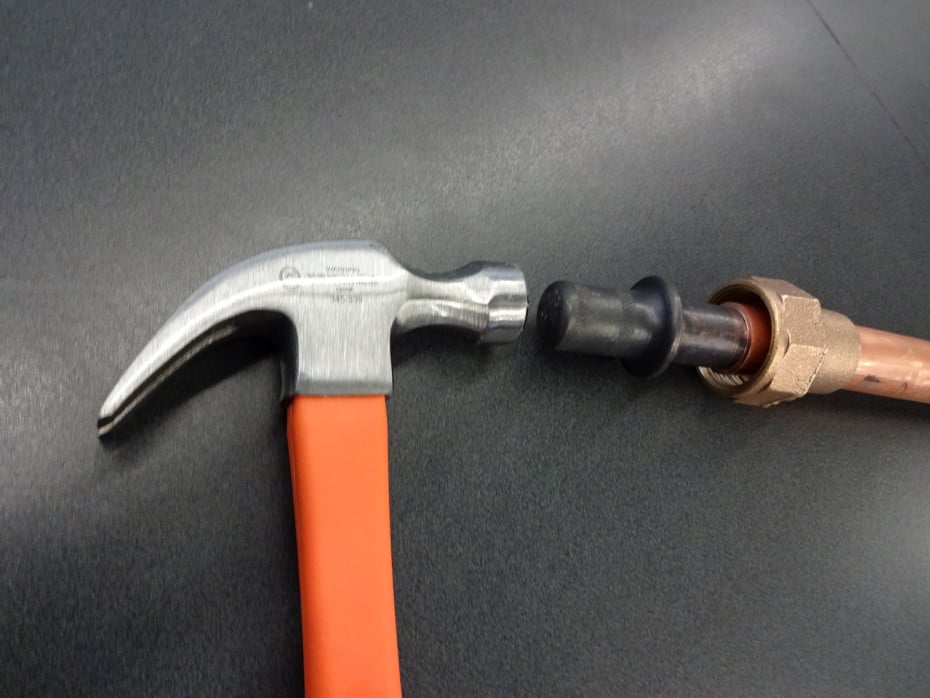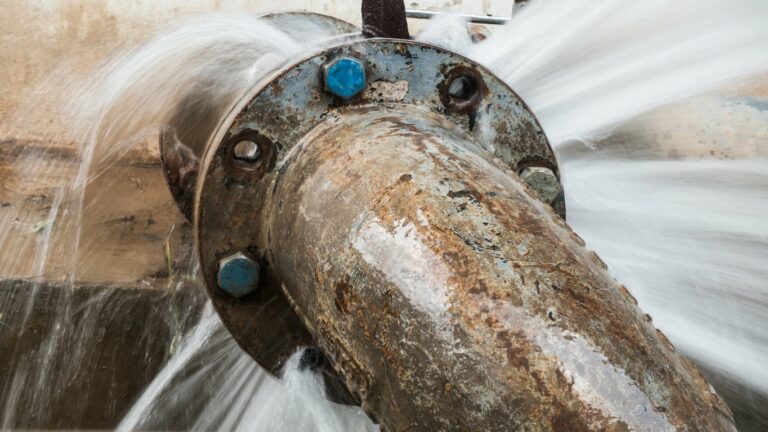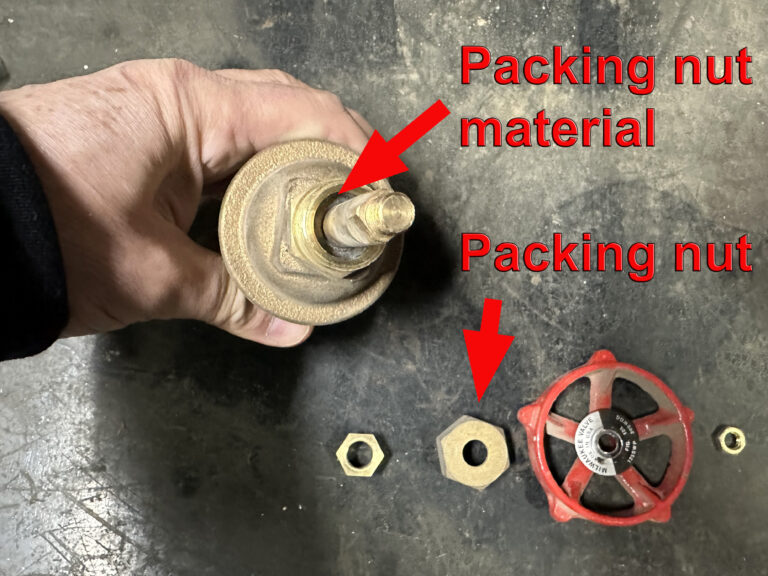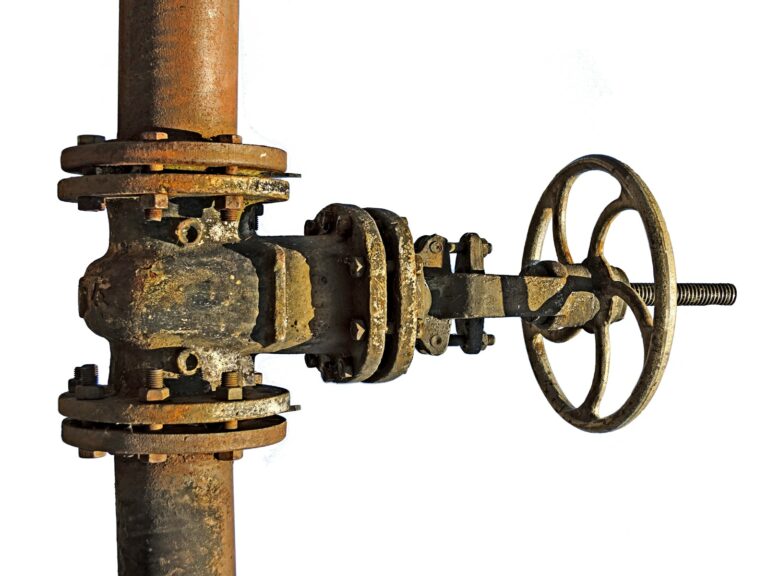Learning how to flare copper tubing can come in handy for several reasons. Not only is copper tubing used for main water service lines, but it also serves various household purposes as well. When soft copper tubing is used for plumbing, different styles of compression fittings are used to make leak-proof connections.
If you attempt to flare copper by using improvised tools, or any household tools, you risk making leaky connections or poor quality connections. Therefore knowing how to flare copper properly means having the proper flaring tools. Investing in a flaring kit, or hiring a knowledgeable plumber is well worth it. General household flaring kits are available in any hardware store, or online.
Flaring tools for larger-sized copper projects will be available from local plumbing supply houses, where can also receive professional and in-person advice. To properly flare your copper tubing follow these instructions:
Cutting the copper tubing properly
The first step to flare copper properly is to cut the tubing to the right length (remember that pipe and water tubing are two distinctly different types of plumbing materials). Instead of using a hacksaw, use a proper tubing cutting tool.
A hacksaw does cut the copper evenly or cleanly. A hacksaw will leave ragged and uneven edges on the cut end. This will lead to a failed connection or future leaks.
A cutting tool circles around the pipe, making for a nice clean cut. It typically has a cutting blade, guide wheel, and knob for tightening. When you rotate the tool around the copper, the blade gradually cuts the tubing and leaves a clean edge. Because you have to rotate the tool during the process, such a tool is best used when you have to cut a pipe that is only a little longer than you need.
You need to have a strong grip on the pipe to make precise cuts, gently tightening the tool every turn or so. After the tubing is cut, you may have to clean off loose pieces of leftover copper.
Many copper cutting tools also contain a cleaning edger. Being patient and not forceful is another essential step in how to flare copper water tubing properly.
How “Not” to flare copper tubing
The effect of not flaring copper properly is potentially unnecessary and costly repairs. This photo below is a Balkan water main repair job required because a previous contractor connected the copper without flaring it. The end result was the copper slipping right out the flare fitting, and causing a flood in the roadway. Additionally, it created a rather expensive repair bill for a Queens NY homeowner.
How to flare copper water tubing on smaller-sized copper
A small flaring tool kit consists of two pieces of equipment, a flare form and a reamer. A flare form is like a clamp which has several holes designed to work with copper tubing of various diameters. It holds the pipe firmly so you can flare the pipe with minimum effort.
Before you put the copper tubing into the flare form, be sure to slide the compression nut first. After flaring, you will not get it on the tubing unless you cut the pipe again. This is a frequent oversight made by beginners not familiar with how to flare copper.
A reamer has a conical point, a screw, and holding arms; it is the tool that does the actual flaring. To flare the pipe, put it into a hole that has a matching size as the copper on the flare form. Place the reamer on top of the flare form so the conical point is against the tubing.
As you tighten the reamer, the conical point will flare the copper easily. Tightening the reamer will get more difficult as the copper tubing flares. Keep tightening until you cannot move the handle any more, never over-tighten. Over-tightening when flaring copper tubing will cause the copper to split.
All steps must be followed for a successful conclusion
Loosen the reamer until you can remove it from the flaring form. Remove the pipe by loosening the clamps on the flare form. In some cases, the flaring is not smooth because the pipe slides as you tighten the reamer. To repair it, make a new cut under the flared part and repeat the procedure.
Learning how to flare copper means knowing that if a flare is not made properly, never use brute force and over-tighten the flare fitting to resolve the issue. Over-tightening any flare will merely split the copper, or break the brass fitting.
Flaring smaller-sized copper meant for household use is relatively simple. However, flaring copper water tubing for actual water service lines requires skill. A drip on a copper line for your ice maker is far different than a drip on your underground main water service line.
Type K Copper water tubing is meant for flaring
Copper tubing comes in four different types, based on its wall thickness. The 4 basic types of copper tubing are Type K, L, M, and DWV. Type K has the thickest diameter compared to other types of copper of any given diameter. Type DWV (drain, waste, and vent) is used mainly for non-pressurized applications.
The ideal type for flaring is Type K because it has a thick wall that can withstand enlargement due to flaring, and because of its soft malleable nature. Type L and M copper are meant to be soldered or brazed to join lengths of it together, as they are considered hard copper tubing. Hard copper tubing is most difficult to flare and is expressly not meant for that purpose.
How to flare copper water tubing on smaller-sized copper
A compression-type fitting used for flared copper is called a flare fitting. Besides copper, a flare fitting is also commonly used for other metal pipes including aluminum and soft steel.
Such a fitting is comprised of two parts, a flare nut, and a tapered end with a threaded end. During assembly, the flared end of the copper pipe is secured to the tapered fitting by the flare nut. It allows for a leak-tight and pressure-resistant seal.
The two parts of flare fitting, the flare nut, and the actual flare fitting, should fit easily together. If extreme force must be used to tighten them, they are probably misaligned.
The 5 Step flaring installation instructions are as follows:
1. A flare nut must go behind the copper tubing before flaring.
2. The flared end of the copper tubing is facing evenly against the tapered end of the flare fitting.
3. Both ends must make contact tightly, and perfectly evenly.
4. Slide the flare nut and tighten it to the flare fitting by hand. A turn or so with an appropriately sized wrench should ensure a leak-proof connection.
5. In case the connection leaks, it is probably caused by improper flaring. A flared end of the copper tubing must make a 45-degree angle all around, and easily cover the face of the flare fitting.
Flare fittings work best for Type K soft copper for two main reasons. First, type K copper has the thickest wall with any given diameter compared to type L or M. Second, being a soft copper allows the flare fitting to fit tightly.
Because a flare fitting is tightened to the flare nut at the other end; both parts keep on pressing each other to make a perfectly sealed connection. Understanding your materials is yet another vital part of flaring copper water tubing properly and achieving a leak-free connection.
Always use approved brass fitting to connect copper tubing
Brass fittings are the choice material to use for flared copper for various reasons. These reasons include, but are not limited to durability, versatility, and malleability. In addition, using unlike metals (such as galvanized steel) will create an electrolysis condition, and rot away the pipe.
Once used, brass fittings remain in good condition for decades. Brass does not easily disintegrate or crack. As a side note, when used for hot water distribution, brass acts as a good conductor for better efficiency. Compared to other metal materials, brass lasts longer when continuously exposed to hot water; it is also fire-resistant.
If you need a precise plumbing installation, brass fittings make everything easier. Another important thing is that brass is corrosive-resistant. Plumbing is all about water, and many metal materials are not as resistant to corrosion and rust.
K copper is used for water service lines with a diameter of up to 2 inches. K copper is relatively easy to bend or shape, meaning it has many uses that stiff piping materials do not. 2-inch K copper requires much more skill to work with, and specialty tools. So you may know how to flare copper, but 2-inch copper may pose a special challenge that requires the services of a professional plumber.

